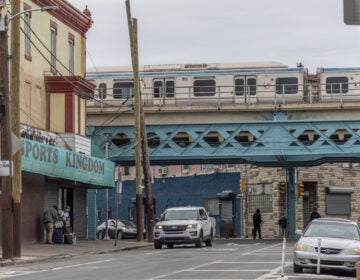Philadelphia clears encampments of homeless drug users in Kensington
More than 100 displaced people accepted help in the form or treatment or shelter while demonstrators protested the eviction.
Listen 2:40-
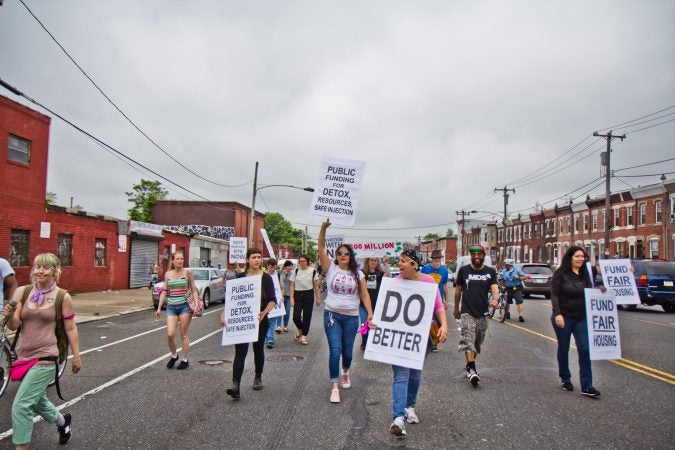
Protesters march down Lehigh Avenue in the Kensington section of Philadelphia an hour before the city began removing people and their belongings from encampments in Kensington. (Kimberly Paynter/WHYY)
-
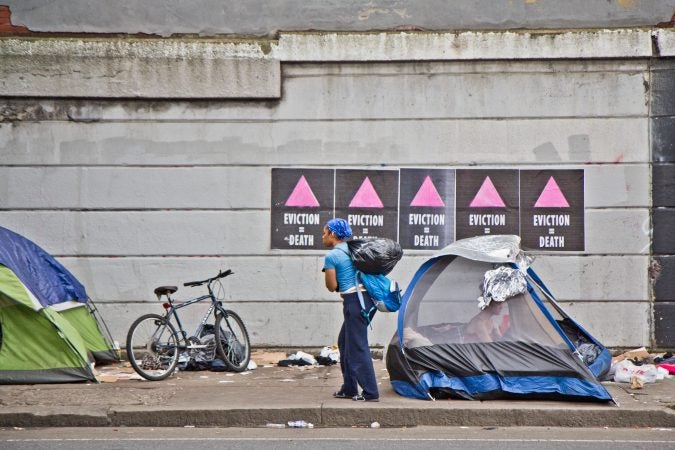
Residents of a homeless encampment at Kensington and Lehigh avenues pack up their belongings as city officials wait to clear the camp.(Kimberly Paynter/WHYY)
-
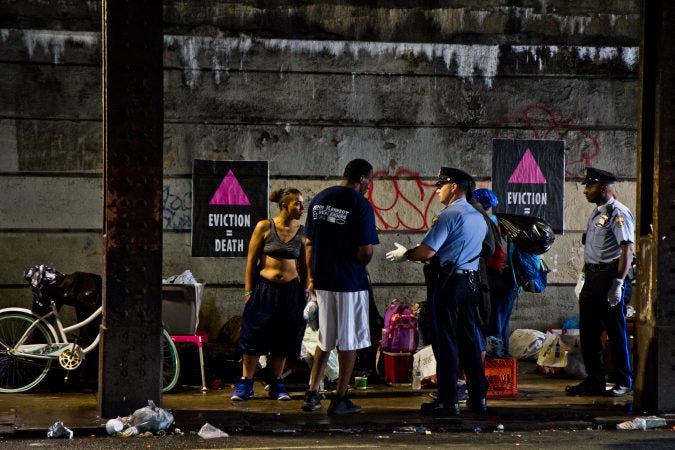
Philadelphia police speak to residents of a homeless encampment at Kensington and Lehigh avenues before a scheduled clean out in May 2018. (Kimberly Paynter/WHYY)
-
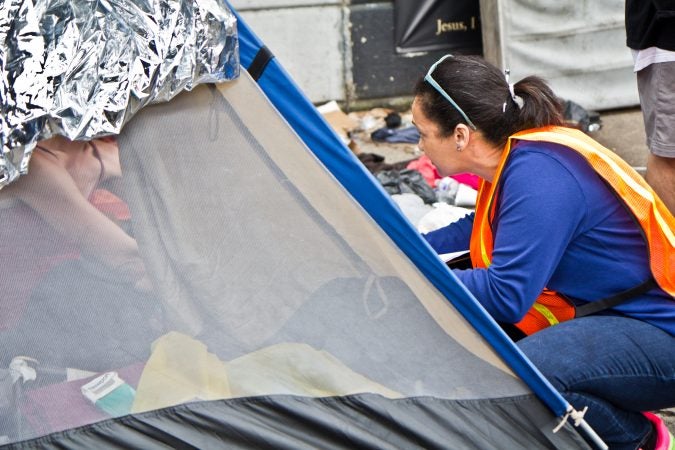
An outreach worker speaks to residents of a homeless encampment at Kensington and Lehigh avenues about half an hour before a scheduled clean out. (Kimberly Paynter/WHYY)
-
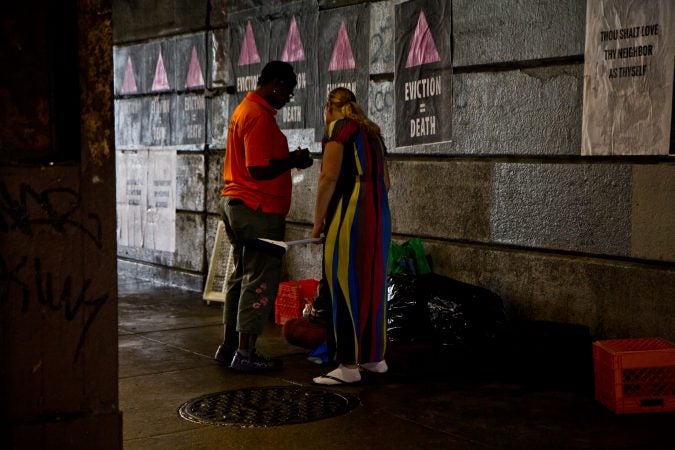
An outreach worker speaks to residents of a homeless encampment at Kensington and Lehigh avenues about half an hour before a scheduled clean out. (Kimberly Paynter/WHYY)
-
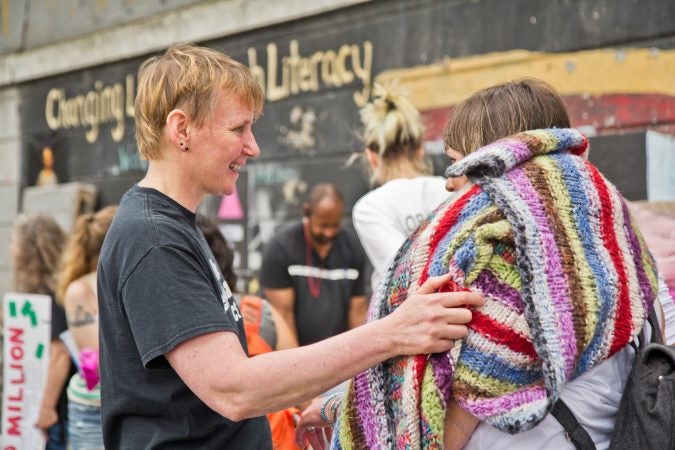
Activist Kathryn Pannepacker wraps an encampment resident in a “healing blanket,” shortly before the city was slated to clear the camp. (Kimberly Paynter/WHYY)
-
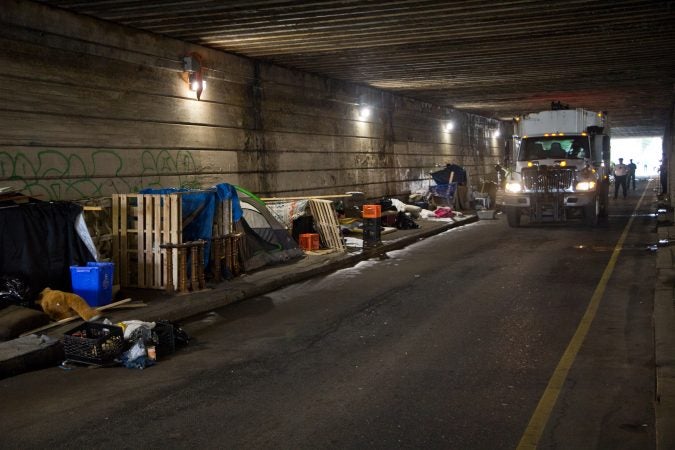
City sanitation workers remove the belongings of people who were living in a homeless encampment at Tulip and Lehigh avenues. (Kimberly Paynter/WHYY)
-
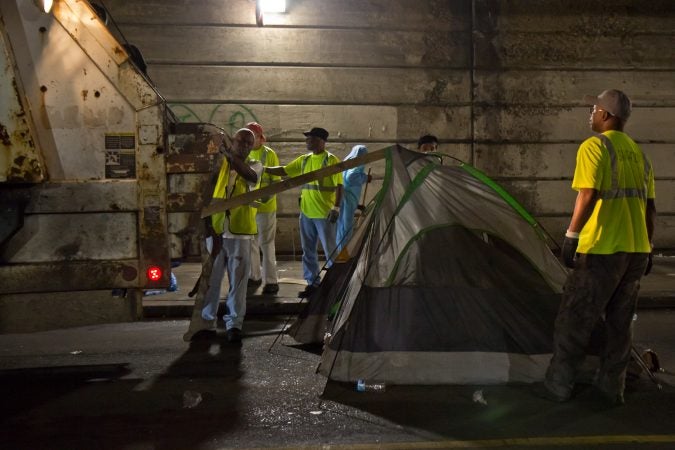
City sanitation workers remove the belongings of people who were living in a homeless encampment at Tulip and Lehigh avenues. (Kimberly Paynter/WHYY)
-
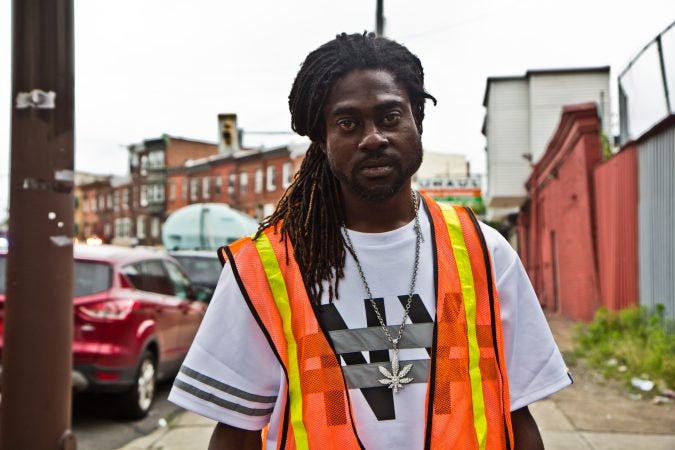
Lewis had a bed in a shelter in Kensington but said he lost it because of his mental health issues. He recently returned to the encampment and said he doesn’t know where he will sleep now. (Kimberly Paynter/WHYY)
-
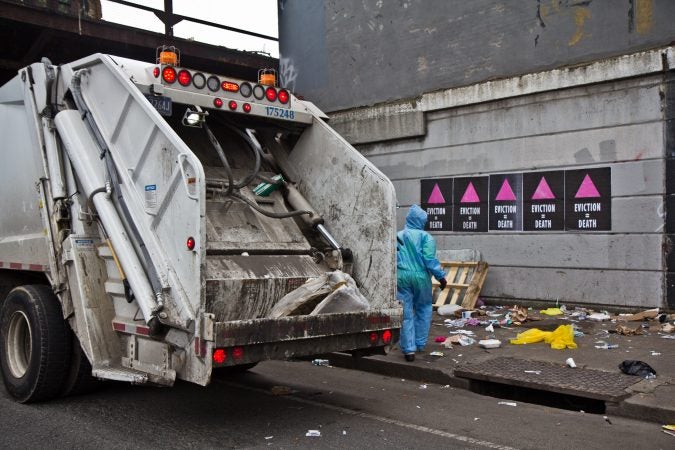
City sanitation workers remove the belongings of people who were living in a homeless encampment at Kensington and Lehigh avenues. (Kimberly Paynter/WHYY)
-
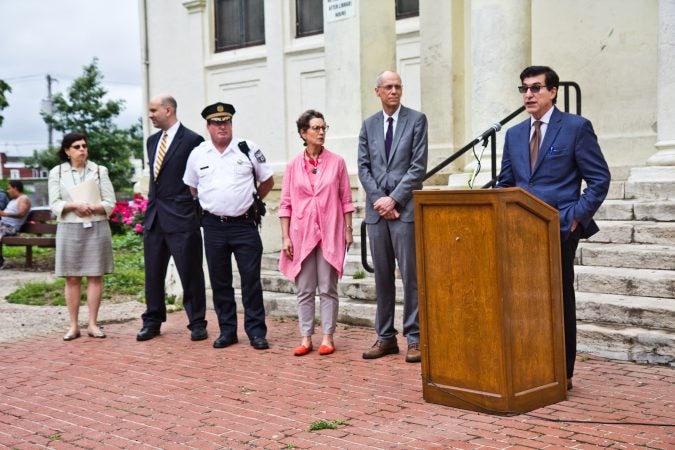
Philadelphia Managing Director Michael DiBerardinis and other city officials brief the press on the progress of the homeless encampment cleanup. (Kimberly Paynter/WHYY)
-
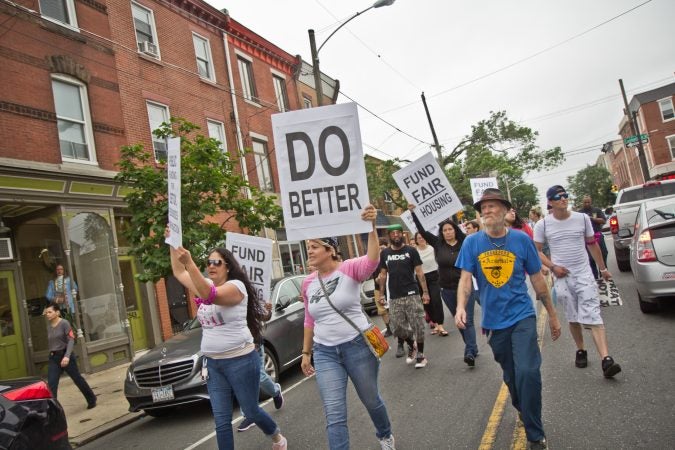
Protesters march down Frankford Avenue on the border of the Fishtown and Kensington sections of Philadelphia an hour before the city began removing people and their belongings from encampments in Kensington. (Kimberly Paynter/WHYY)
In the dim light of the Tulip Street bridge underpass Wednesday morning, Thomas McGrath was busy breaking down his tent. His was one of several tents still standing just minutes before the 10 a.m. deadline Philadelphia had given homeless people camped out there to leave.
Swarms of outreach workers were trying to get stragglers out before police and sanitation trucks came through to clean up the trash and belongings left behind.
McGrath, 57, said he had been homeless for about a month after several years of recovery.
“I’m a heroin addict, and I got caught up again,” he said. “Lost my place to live, so I ended up out here. So now they say it’s time to go, and there’s nothing I can do about it.”
He said he was planning to pitch his tent somewhere else, maybe under the I-95 overpass nearby.
The Tulip Street tunnel was one of the two encampments the city cleared away Wednesday, marking the end of a pilot program designed to get more homeless drug users off the streets in Kensington and into housing and treatment programs. Outreach workers spent a month engaging those gathered at Tulip Street and the other encampment at Kensington and Lehigh avenues, creating a list of 110 people who lived there. They offered beds in low-barrier shelters for active drug users and treatment for those who wanted it.
McGrath said he wasn’t ready for treatment yet, and didn’t take a shelter bed he was offered because he wasn’t comfortable going outside the neighborhood. The city opened a 40-bed respite in Kensington, but it quickly filled up, along with available beds at another shelter in the area. The rest of the beds reserved for displaced campers were beyond the neighborhood at a shelter west of Broad Street.
If it were “in this neighborhood, I’d be in it, believe me,” McGrath said.
Demonstrators, neighborhood residents at odds
At the Kensington Avenue encampment, a small group of demonstrators gathered to protest the eviction.
Although the city expanded shelter capacity and said it lowered barriers to accessing addiction treatment for people at the camps, protesters said not everyone was getting the help they needed.
“We want shelter beds and treatment beds for everybody that wants them,” said Vanessa Baker, who helped organize the demonstrators. “These are our neighbors, and this is a living hell out here — nobody should live like this.”
A large crowd gathered in the street before police moved in to clear out a few people who lingered at the encampment. Protesters mixed with a throng of camera-wielding reporters, observers from nonprofits such as the American Civil Liberties Union, and other curious onlookers. At one point, a shouting match erupted between protesters and neighborhood residents who supported the clearing away the camps.
Neighbors have been pressing the city for months to get homeless drug users off the streets, and city officials said they had to balance neighbors’ concerns with the need to help those living at the camps. Officials said the encampments were a sanitation hazard and unsafe for campers and neighborhood residents alike.
“The hard work was coming up with an approach that met the interest of the surrounding communities, and offered options to the homeless addicted folks in the tunnel,” said Michael DiBerardinis, the city’s managing director.
Officials said 125 people have accepted treatment or housing during the pilot program. That number is greater than the 110 who lived at the camps because outreach workers engaged many who were visiting the camps to buy, sell, or use drugs. Officials said they didn’t know how many of the 110 encampment residents entered housing or treatment, and how many were, like McGrath, still living on the streets.
The city said it will evaluate the program before deciding how to deal with two additional encampments in the neighborhood.
WHYY is your source for fact-based, in-depth journalism and information. As a nonprofit organization, we rely on financial support from readers like you. Please give today.


